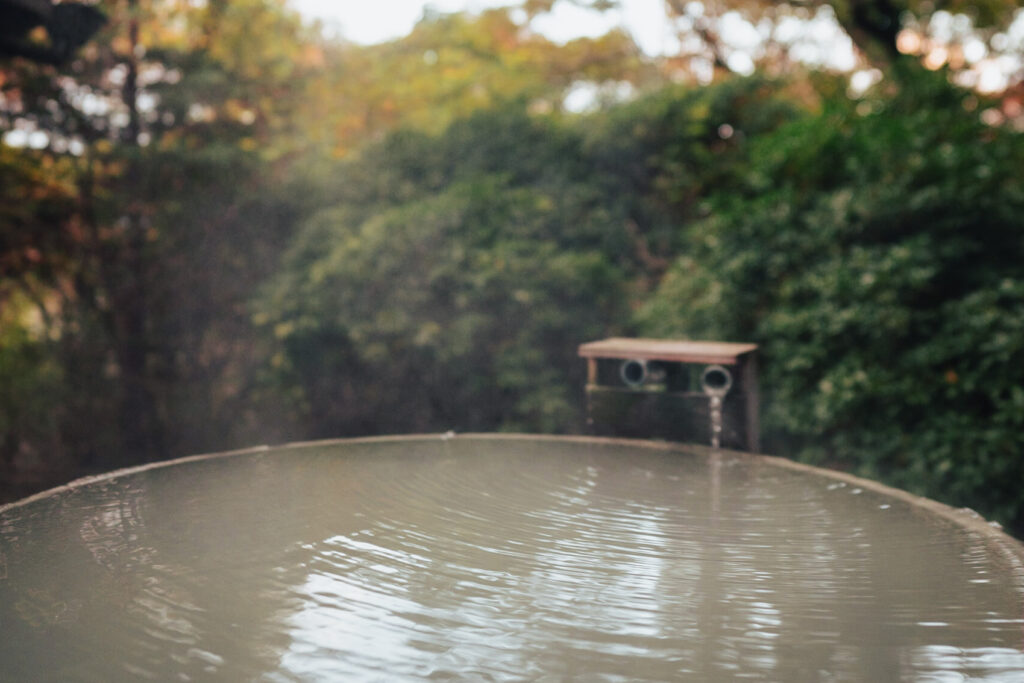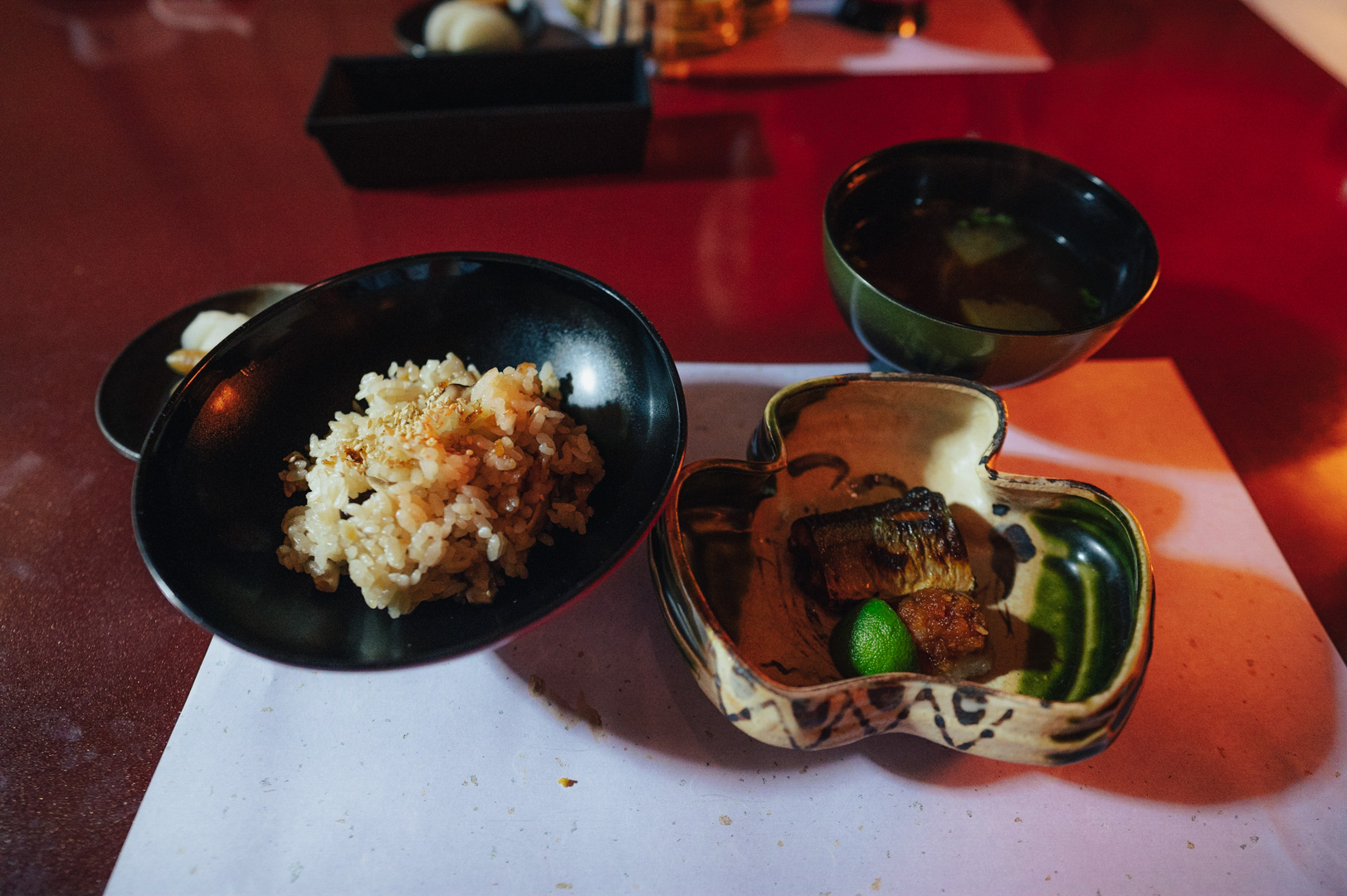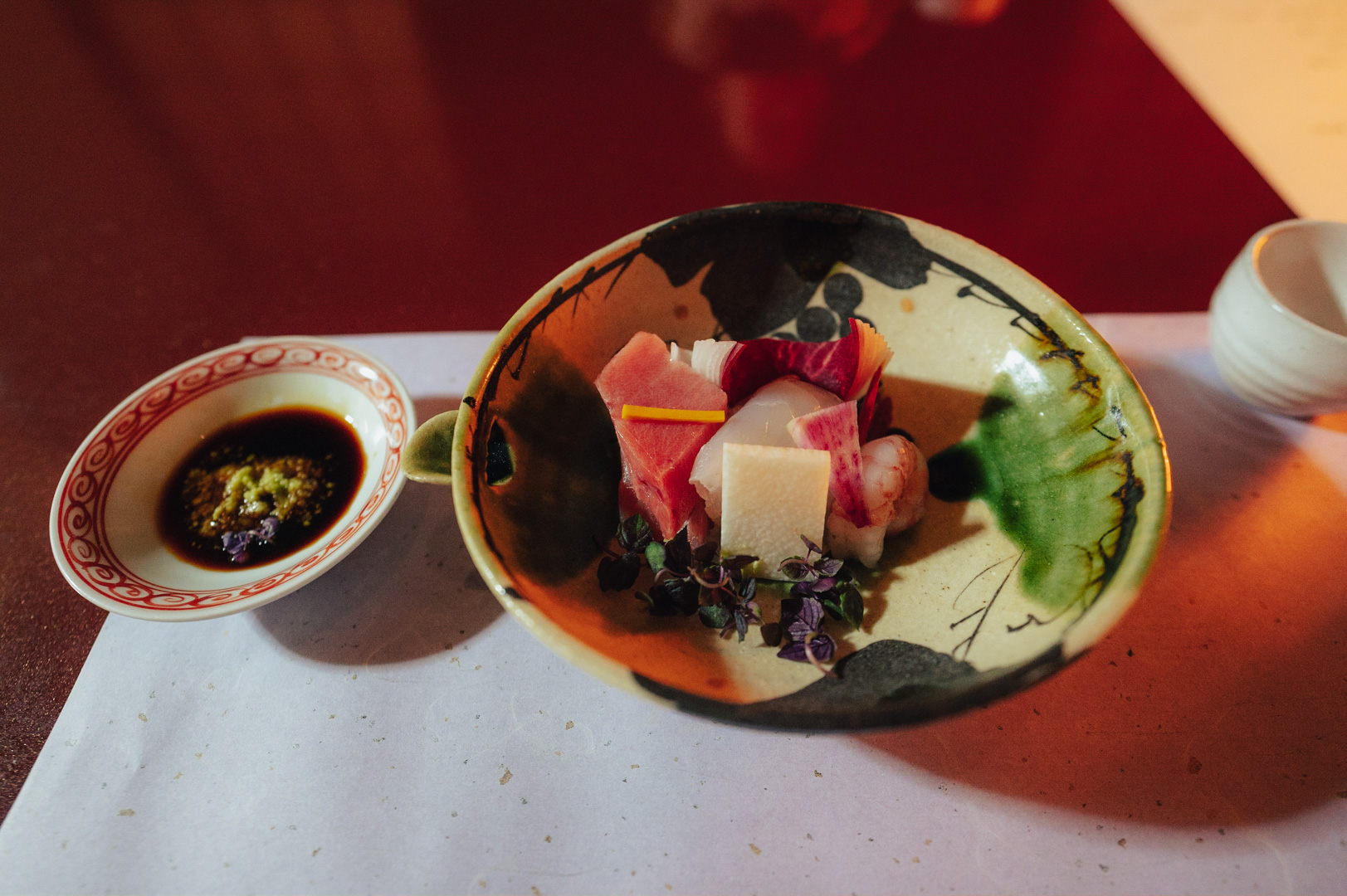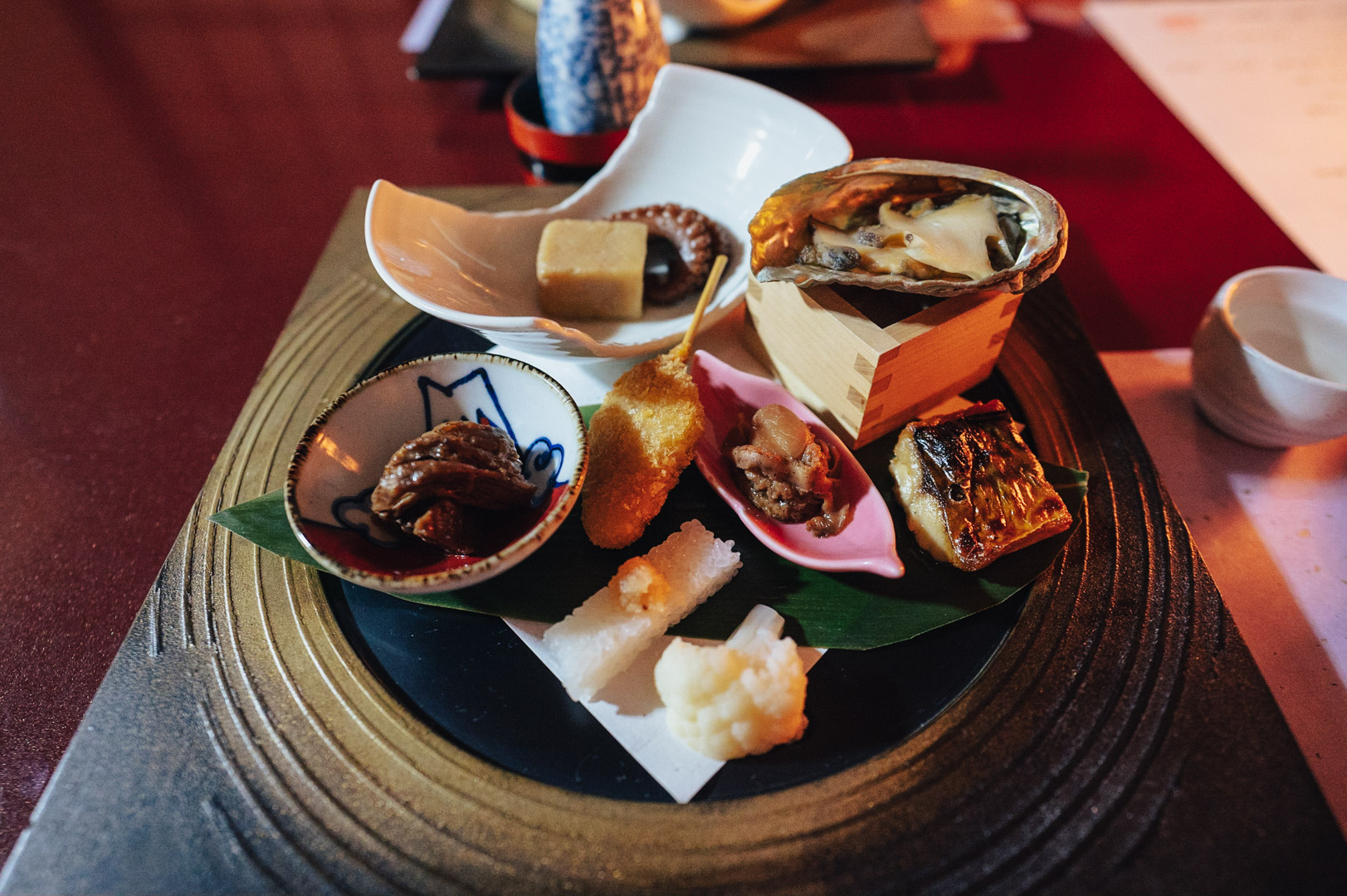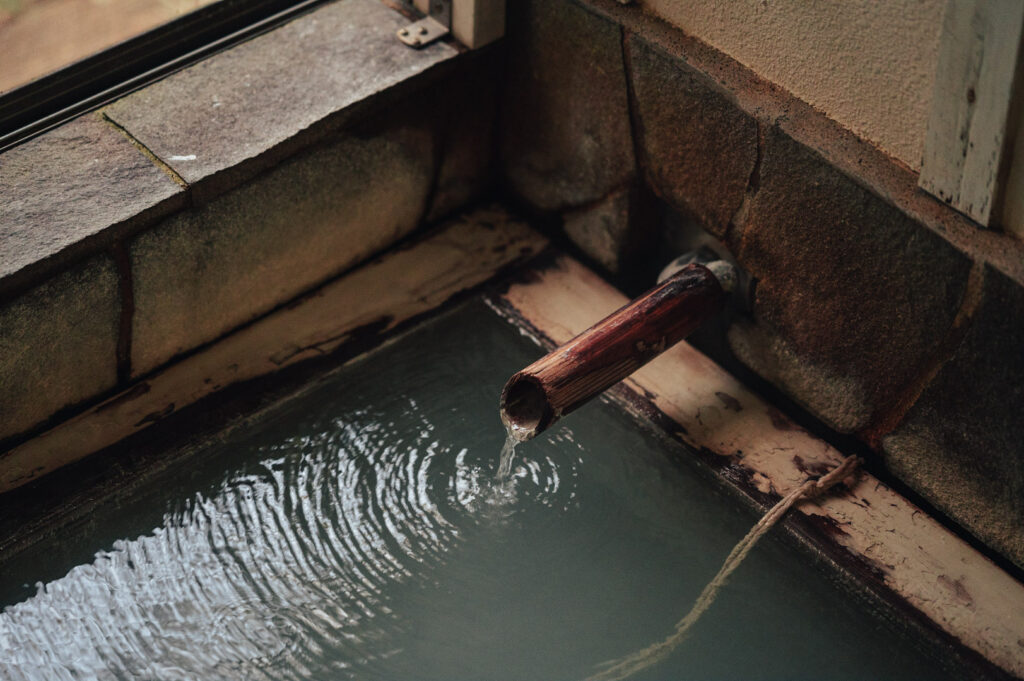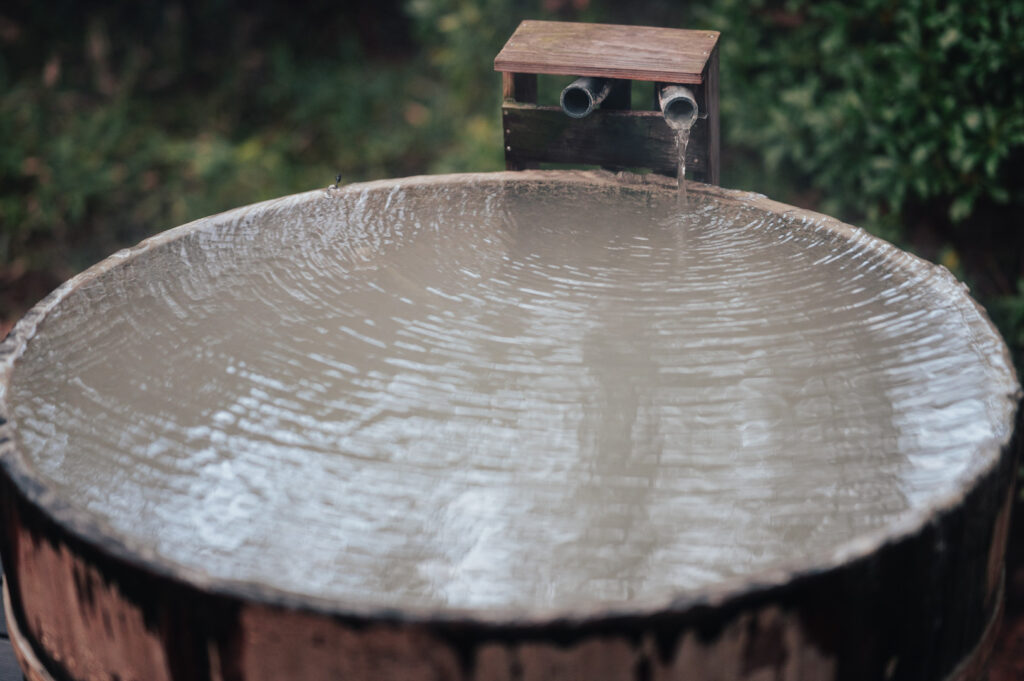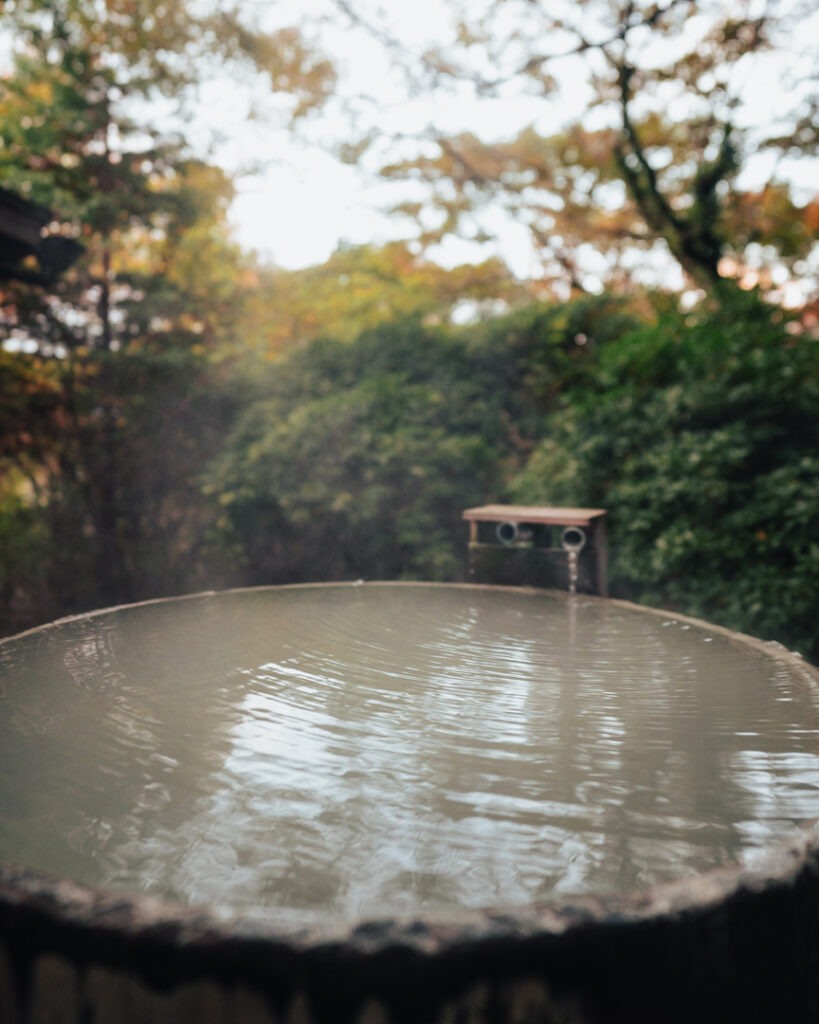Bangakuro (in Japanese: 萬岳楼) Ryokan in Sengokuhara, Hakone is nestled at the heart of Hakone itself. Just a short climb through the mountain road is the private and quiet ryokan – Bangakuro.
What is this talk about privacy I hear you asking. Well, this place is quite unique as it only has 9 rooms, which all come with private in-room onsen.. well, technically mostly they seem to be outdoor onsen (rotenburo).. which is even better! I might have very biased take on indoor vs outdoor onsen, where almost always the latter takes the cake for me. The main reason being, there is something incredibly refreshing being in onsen and outside at the same time. This is even more elevated if the place offers some kind of vistas and views to take in.
Reception, Detailing & Hospitality
As in most places the hospitality is a top notch, and this is something you do come to expect from ryokans and Japanese hospitality. Since it only caters to a maximum of 25 people a night (over the 9 rooms) then the place does seem exceptionally quiet. Most visitors have no reason to leave their rooms since food, onsen is all setup there.
The architecture of the building is quite unique as well. The main building itself where the lobby and reception is located seems to have a very long history. The wooden beams there date back to the Edo Period (1603 – 1868). While the housing wing for guest rooms are newer additions and have all the modern comforts and traditional ryokan styling (although few rooms are also catered more towards Western-Japanese style).
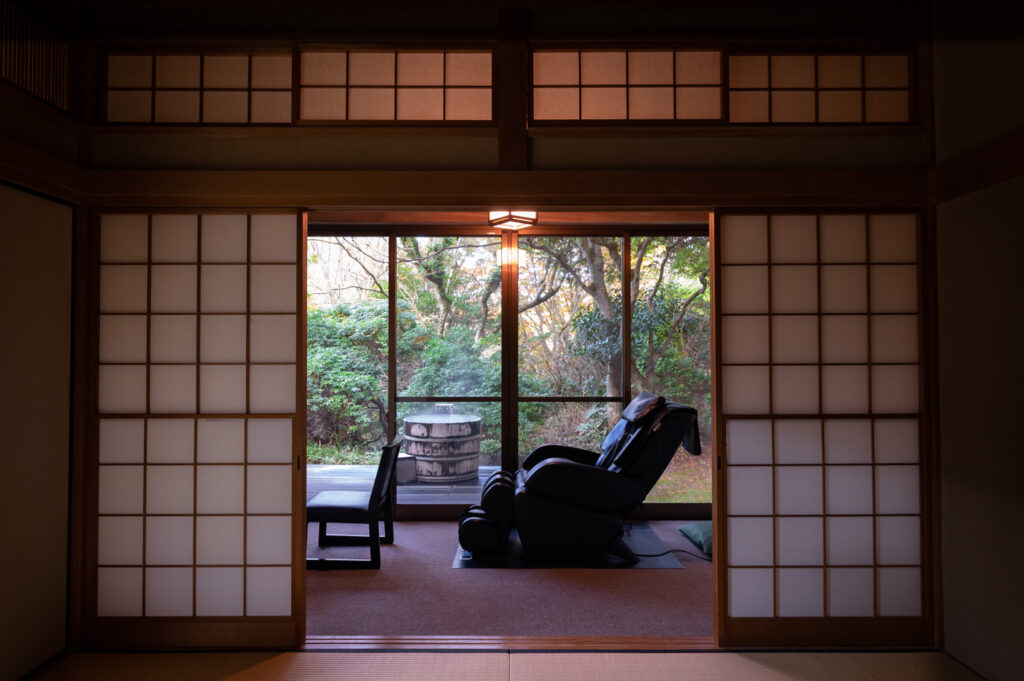
Kaiseki Dinner
Well, this will likely be similar for most posts in here, food is absolutely mouth-watering. One noteworthy point is perhaps that during our visit, the kaiseki consisted heavily of fish dishes (I am all for it!). Almost always you can expect fish during kaiseki, and more often than not there are small but quality raw fish (sashimi) bites. I truly enjoy good food and over the years have come to especially appreciate the quality of raw foods.
Never have had any stomach issues with raw fish in Japan. But I acknowledge that perhaps I have an iron stomach, my family who often visits are bit more vary with some raw foods (especially shells and clams). But one thing could also be because of wasabi. What I do is that I usually never eat pure wasabi but rather mix it with soy sauce and then dip the fish inside (same for sushi), somehow this works much better for me in terms of taste and just a bit easier.
Onsen Experience – It’s quite something!
This place has a very acidic onsen water directly from the source (they do not mix it with anything else). I truly enjoy low pH water (I think this place’s pH levels were around 2.X), this was also the first time I learned that, well.. do not put that water in your face! Probably would be fine if quickly wash the face with onsen water to get the minerals to the skin a bit, and then immediately rinse it down with fresh water.
Because it is very acidic, the face skin is not too happy about it and gets all dry, tight and reddish.. in hindsight makes perfect sense, but oh well, we live and learn right! In that regard, also for people with sensitive skin this type of water quality might not be the best since it could irritate skin a lot. Everyone is bit different and hard to tell, but if going for low pH onsen water, then recommend doing very small dips and then rinsing afterwards with fresh water to see how it goes.
The baths themselves are fantastic, I really like the design of having a basically a barrel tub on the terrace and enjoying quiet forest views. Some rooms have bit different styles of baths it would seem, but the one in the photos here fitted 2 people quite nicely.
Surrounding Areas
Since it is basically in Hakone then there is so much to go and see and do around this area. Among foreign visitors (and Japanese as well), Hakone is incredibly popular.
The likely reasons for this are: close to Tokyo, many onsen and ryokans, Mt. Fuji, Ashi lake, museums and just beautiful and interesting sceneries. Most of these locations are incredibly close from Bangakuro as well. For instance by car:
The Hakone Open-Air Museum – 8 min
Pola Museum of Art – 2 min
Sōunzan Station (ropeway that takes to Owakudani) – 7 min
Lake Ashi (north side; Hakone Pirate Ship port) – 14 min
Lake Ashi (the famous “Hakone Shrine”) – 25 to 30 min
General Insights:
Website: bangakuro.com
Address: 1251 Sengokuhara, Hakone, Ashigarashimo District, Kanagawa 250-0631, Japan
Price range: “Standard plan” with a room for 2 people and kaiseki dinner is around 25 000 yen.
* Note that prices can range a fair bit and are especially higher during weekends and public holidays.
Access Information:
Car: For Hakone would still recommend by car. Similar to many other places it just offers a level of flexibility for doing many other activities.
Car duration (from Tokyo): ~1.5 – 2.5 hours (Coming from central Tokyo the traffic situation can really influence that, especially weekends and rush hour times)
Public Transport: Hakone being a popular destination, public transport should be quite good as well. Though would need to confirm with Bangakuro if they offer any pickup services beforehand, as it is a little bit out of the way from central Hakone and would not recommend doing luggage pull all the way there (unless prefer to get those calory burns in between the culinary delights). For transport, trains are usually the best.. to a certain extent. For instance:
1) The Odakyu Romance train gets you from:
“Shinjuku Station” to “Hakone-Yumoto Station” in 1.5 hours
2) From Hakone-Yumoto Station there are some options by bus:
“Hakone-Yumoto Station” take the “T桃源台線桃源台行/ T Togendai Line bound for Togendai” bus to “宮城野橋/ Miyagino Bridge” which takes ~14 minutes.
From there walk to “Gora Station” (~12 minutes).
3) From “Gora Station” take another bus “S天悠~強羅小塚~湿生花園前湿生花園前行” to Shimoyu Hot Spring Bus Stop (8 minutes / 5 stops). And voila, you are there! Honestly, I have been Japan for some time now, and the bus system (and names) still baffles me sometimes as well. But especially in more rural and mountain areas they are quite common, and usually Google Maps gets you where you need to go.
Public Transport duration (from Shinjuku station): 2.0-4 hours (really depends on schedule and which transportation mix using)
